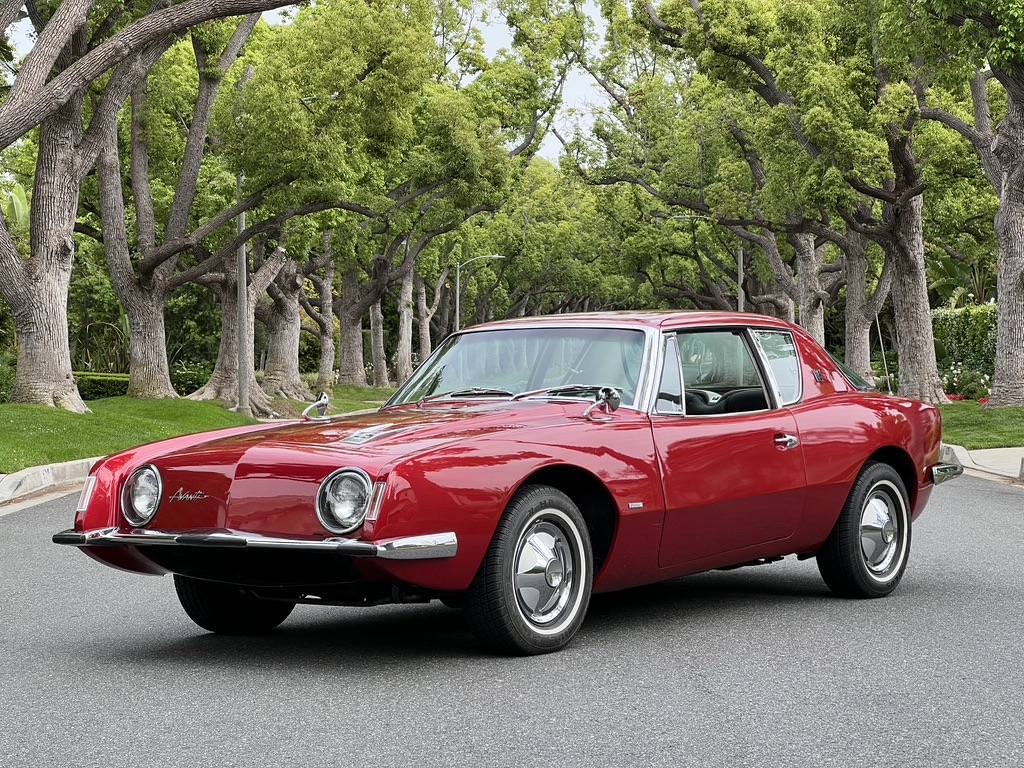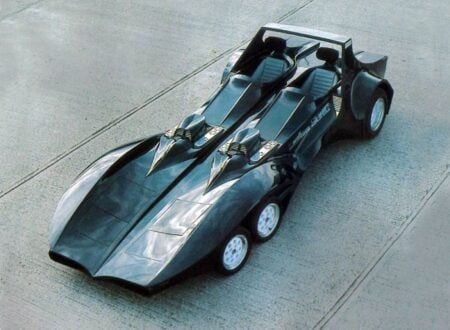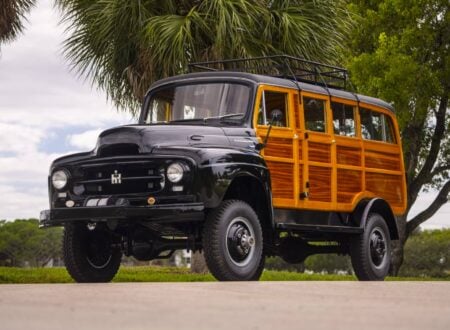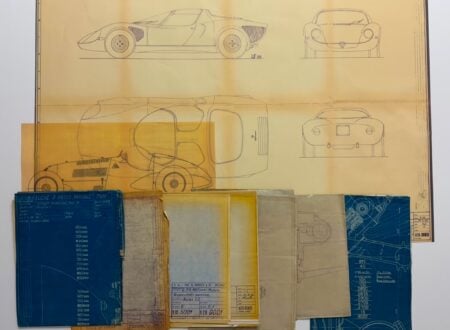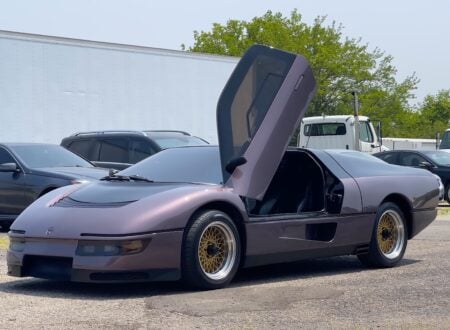The Studebaker Avanti R2 was hailed as the world’s fastest production car after its release in 1962, it broke 29 world speed records at the Bonneville Salt Flats including one run clocking an incredible speed of almost 170 mph using a modified V8.
There were two main production versions of the Studebaker Avanti, both V8s, there was the R1 naturally aspirated car making 240 bhp and the supercharged R2 version making 290 bhp. Thanks in part to the lightweight fiberglass body the R2 was capable of a 0-62 mph time of just 7.3 seconds.
Fast Facts – The Studebaker Avanti R2
- The Studebaker Avanti is one of those cars, like the Lotus 7, that simply refused to die after its original automaker ceased production.
- When it was unveiled with much fanfare in 1962 Studebaker made sure everyone knew that it was designed by a team led by Raymond Loewy, that it had a lightweight fiberglass body, and that it had just broken 29 world speed records on the salt flats of Bonneville.
- The Avanti was powered by a modified 289 Hawk engine with 240 hp in “R1” naturally aspirated form or 289 in “R2” supercharged form, it had seating for four, and an unusual “bottom breather” front end that did without a traditional grille.
- Due to a multitude of financial issues the Studebaker Avanti would only remain in production from 1962 to 1963 with fewer than 5,800 made in total before the factory was shut down. The tooling and rights to the design would be bought by a pair of Studebaker dealers who would bring the model back into production in 1965.
The Avanti: Love it Or Hate It
The design of the Studebaker Avanti has been dividing people into two fairly distinct camps for the better part of 70 years. On one side of the aisle are the people who absolutely hate it, and on the other side the people who love it beyond what many consider rational for a human-automobile relationship.
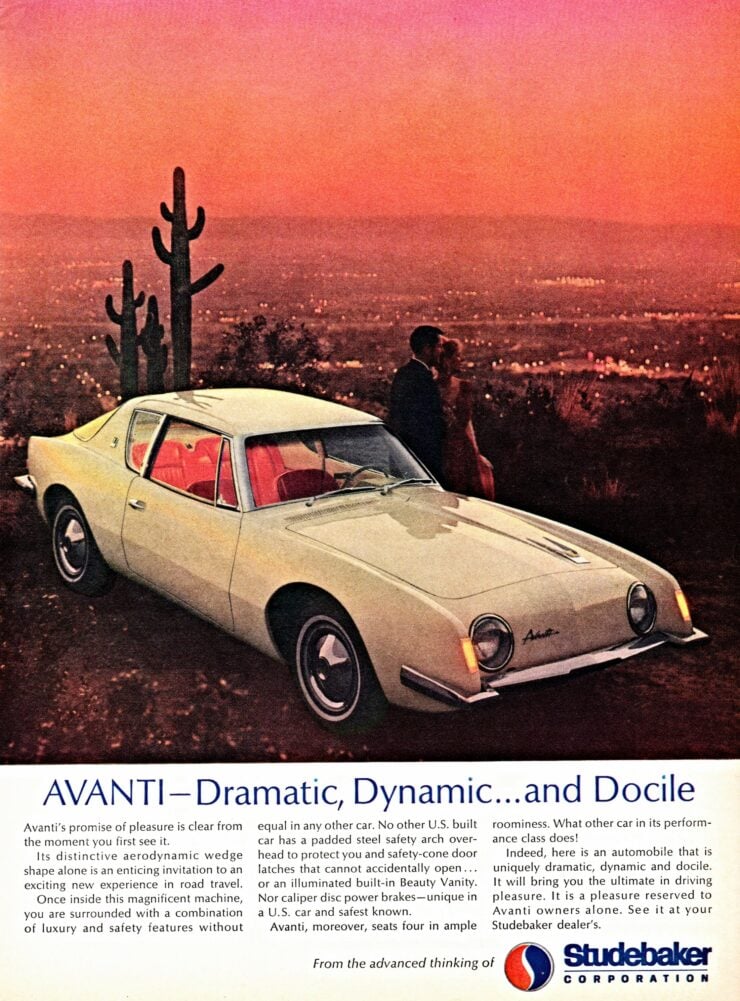

Thanks to those people who love it, the Avanti enjoyed a long (albeit stop-start) production run that ran from 1962 until 2006. The highly unusual design of the car is widely credited to industrial design icon Raymond Loewy, however the truth of the matter is that the design happened under his watchful eye, with designers Tom Kellogg, Bob Andrews, and John Ebstein doing much of the actual pencil work.
The Last Chance To Save Studebaker
In February of 1961 Sherwood Egbert took over as the new Studebaker president, the task ahead of him was one that few would envy – he needed to turn around the fortunes of a once great American automaker to save not just the company but the jobs of thousands of its employees.
Egbert realized that Studebaker needed a new halo model. A car that would draw crowds into dealership showrooms and get splashed across the front pages of newspapers and magazines from Connecticut to California.
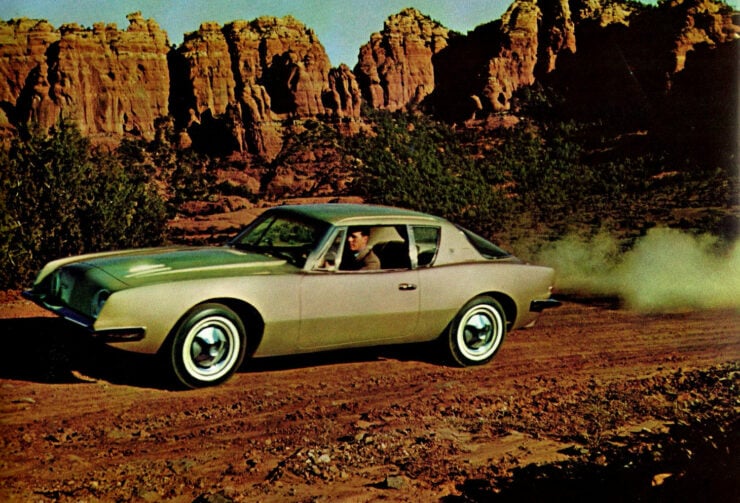

The first concept of the car that would become the Avanti was said to have been doodled by Egbert during a flight, he envisioned a car that would be a competitor for the best-selling Ford Thunderbird – a vehicle that had morphed from a sporty two-seater into a more luxurious car with two rows of seats.
When looking for the designer for his new halo car Egbert didn’t have to look far, he turned to Raymond Loewy who had overseen the design of the revolutionary 1953 Studebaker Starlight coupe – a vehicle that had greatly helped in keeping the automaker in business throughout the 1950s.
By this stage things were critical, finances were already tight for Studebaker and there simply wasn’t going to be enough money or time for a lengthy vehicle design and prototyping phase. Raymond Loewy is said to have rented a desert ranch house near Palm Springs in California where Tom Kellogg, Bob Andrews, and John Ebstein were based for the duration of the 40 day project.
They apparently had sketches completed and a small clay model done in just eight days, it was an asymmetrical model with one half showing a two-seat coupe, and the other half showing a four-seat coupe.
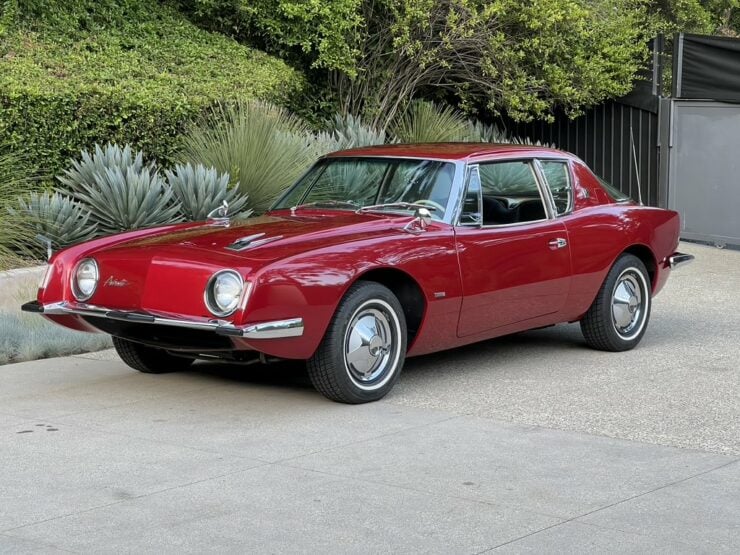

According to Aaron Severson in his book “The Unlikely Studebaker: The Birth (and Rebirth) of the Avanti” “Loewy envisioned a low-slung, long-hood-short-deck semi-fastback coupe with a grilleless nose and a wasp-waisted curvature to the rear fenders, suggesting a supersonic aircraft.”
The four-seat coupe was approved for production with minimal changes, it was deemed uneconomical to build the body in steel and so Studebaker turned to the company Molded Fiberglass Body, the same outfit that had made the fiberglass panels for the original 1953 Corvette.
There was no time of budget for a new chassis design, so the Avanti was built on a shortened version of the Studebaker Lark convertible chassis, with sport suspension consisting of front/rear anti-sway bars and radius rods in the rear better handling than most comparable cars of the time.
The Studebaker catalogue was also raided for an engine, the 289 cubic inch (4.7 liter) V8 was chosen, and both naturally-aspirated and supercharged versions would be made available. The car could be ordered with either a four-speed manual or a three-speed automatic, and the Studebaker Twin Traction limited-slip differential was an optional extra.
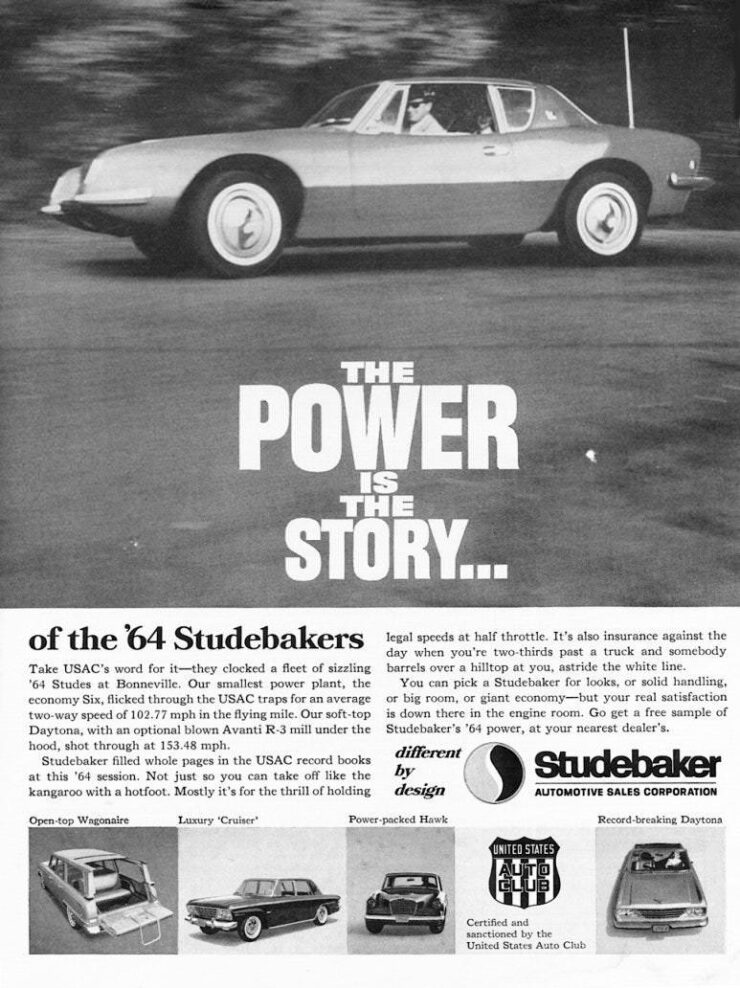

At its release in 1962 the Avanti had a curb weight of 3,095 lbs (1,404 kgs), vastly less than the third generation Ford Thunderbird with which it was meant to compete, which tipped the scales at 4,277 lbs (1,940 kgs).
The Launch Of The Studebaker Avanti
The Studebaker Avanti was publicly launched simultaneously at the New York International Automobile Show and at the Studebaker Annual Shareholders’ Meeting in 1962. An early production model was given to Rodger Ward, the winner of the 1962 Indianapolis 500, who thus became the first private owner of an Avanti.
I order to win as many positive headlines as possible for the new car Studebaker took a modified Avanti to the Bonneville Salt Flats in Utah. Over the course of a few days the modified Avanti broke 29 production car records, eventually posting a top speed of almost 170 mph in the flying mile with the company’s president at the wheel.
Initial excitement around the car was significant. Here was a new vehicle that seemed to offer the performance of a Corvette with the four-seat practicality of the Thunderbird. It was a niche that would be ver effectively filled by the Ford Mustang just two years later when it was released in 1964.
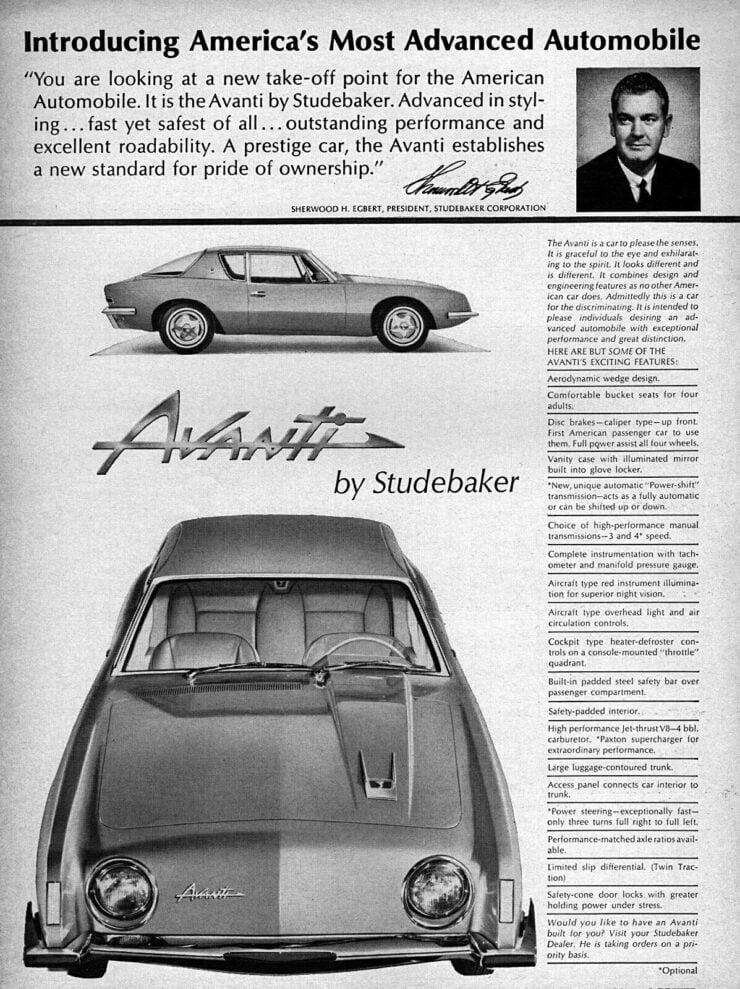

Unfortunately the Avanti was plagued with production difficulties and delays, which attracted significant media attention. Many of these problems were a result of poor quality bodies being made by the Molded Fiberglass Body company. The initial excitement around the model quickly turned sour as cars that had been ordered were never delivered, orders were canceled, and new orders fell precipitously.
From the 20,000 Avantis planned for 1962 just 1,200 were actually made. Things were slightly better in 1963 with approximately 4,600 Avantis made, but it was too late for the company and the Studebaker factory closed on December the 20th, 1963 – just five days before Christmas.
The Car The Refused To Die
Despite its difficult debut the Studebaker Avanti would become one of those cars that simply refused to die. It attracted a significant number of die-hard fans over the years and it would be produced in five decades, in various forms, from 1962 to 2006.
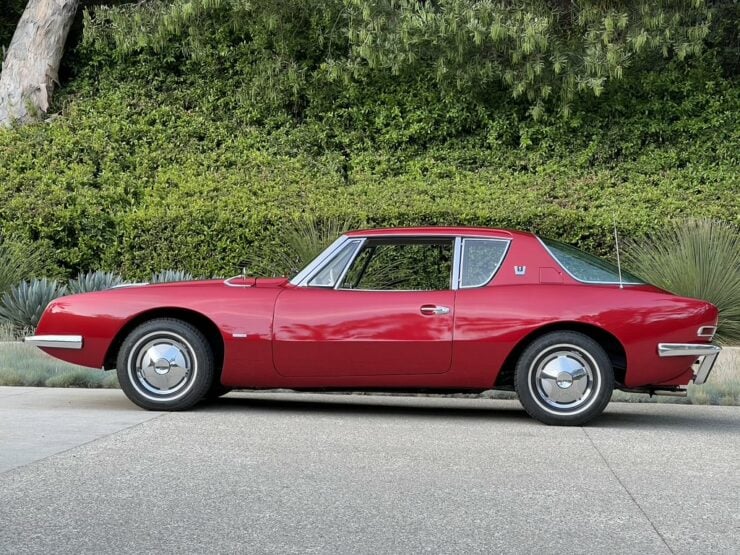

These later versions of the car, now simply called the Avant with no Studebaker branding, were produced in a number of forms including convertibles, four-door sedans, and a wide variety of engines were offered – mostly sourced from either General Motors or Ford.
As a result of this there are now vibrant Avanti clubs across the United States and at present there are rumors afoot that an electric production version is in the works. Given the history of the car it can’t be ruled out.
The 1963 Studebaker Avanti R2 Shown Here
The car you see here has one of the most desirable specifications in the eyes of collectors and enthusiasts, it’s a 1963 Studebaker Avanti R2 meaning its one of the factory-supercharged cars offering 290 bhp.
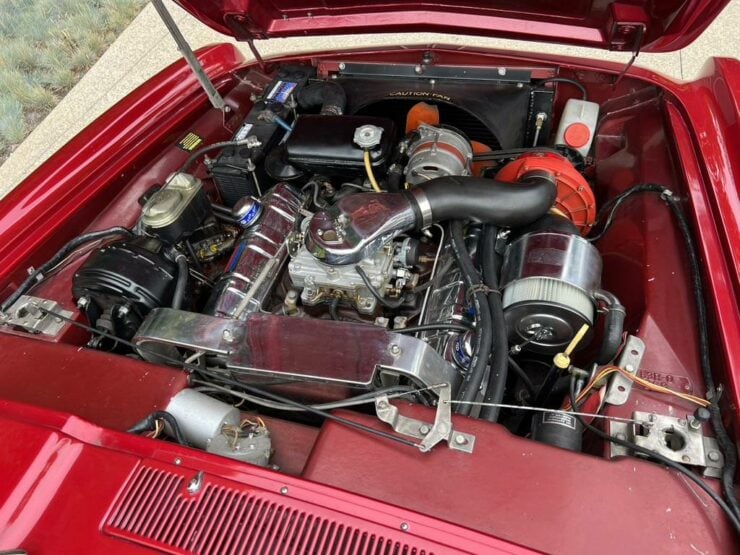

This Avanti is finished in red over black vinyl upholstery and it has the 289 cubic inch Studebaker V8 mated to a three-speed automatic transmission.
Additionally, the car has the optional Twin-Traction limited-slip differential, as well as 15″ wheels, front disc brakes, power steering, a dual exhaust system, electric windows, and a Blaupunkt AM/FM cassette stereo.
The car is now being offered for sale out of Beverly Hills, California on Bring a Trailer. If you’d like to read more about it or register to bid you can visit the listing here.
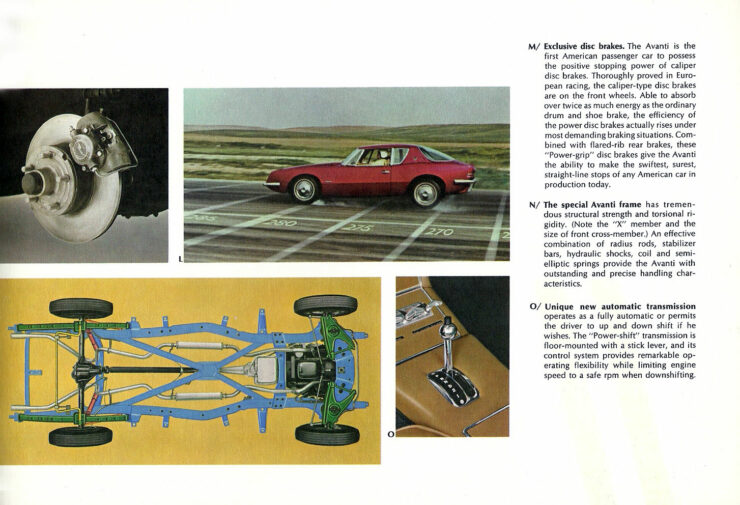
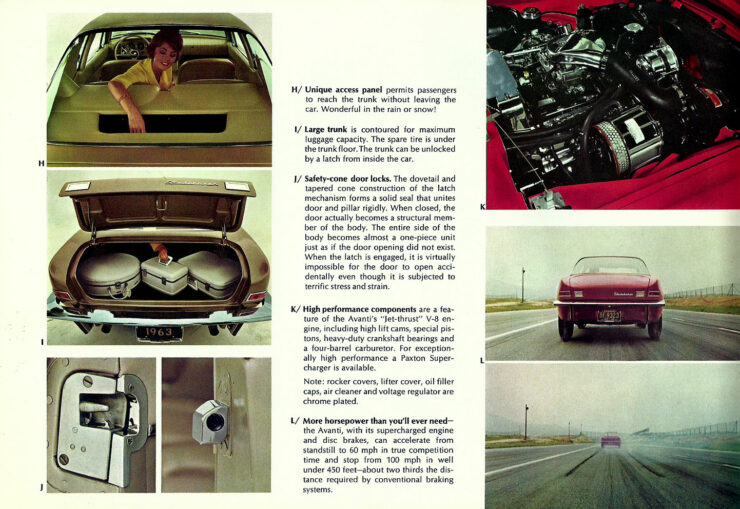
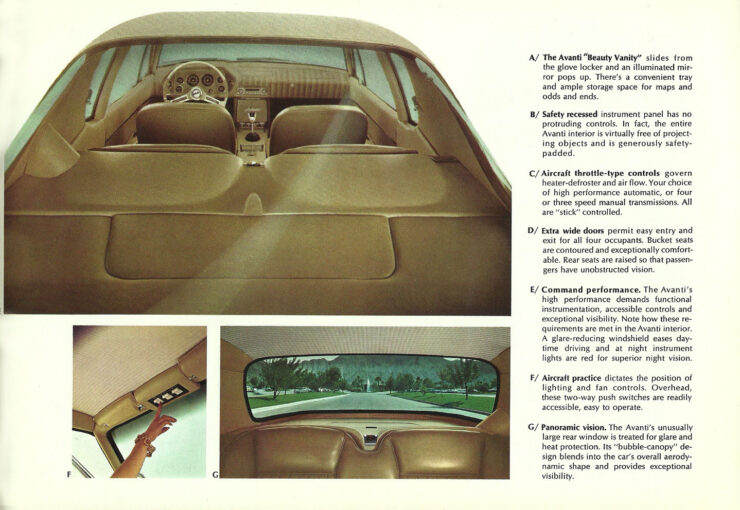
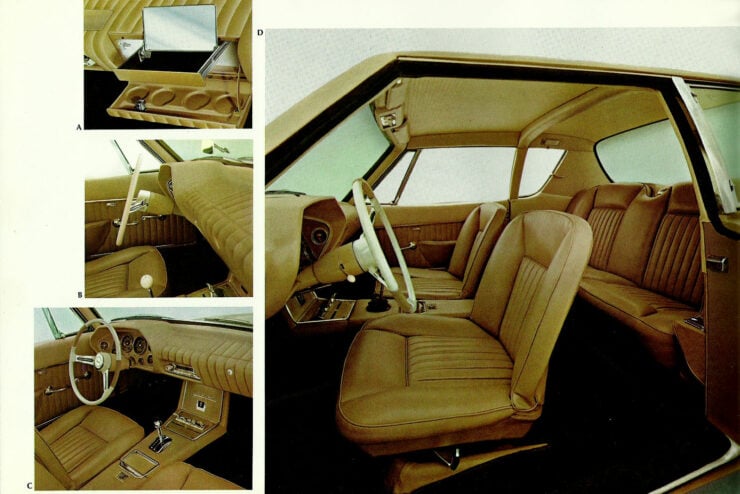
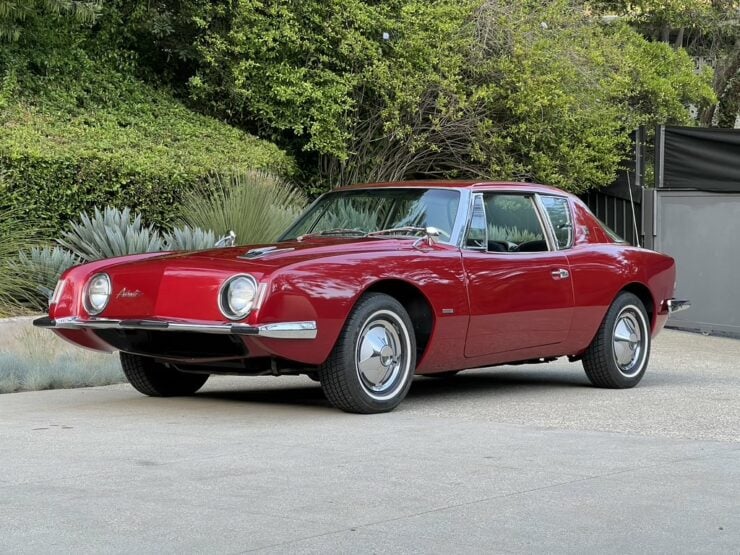
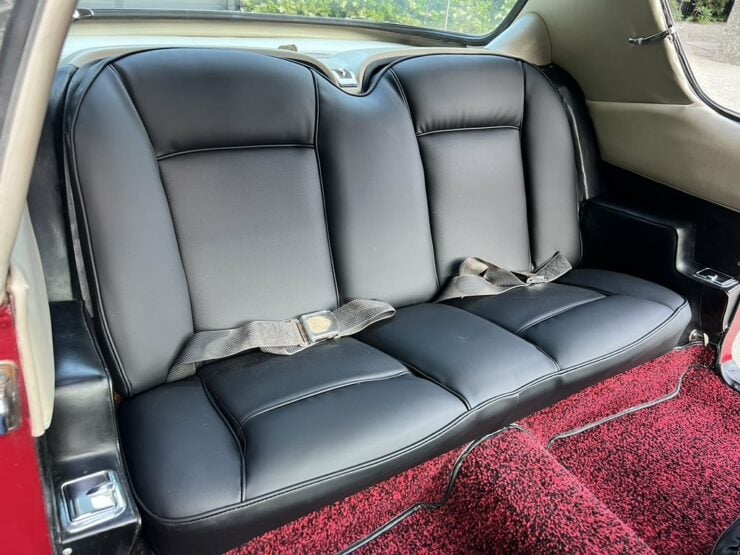
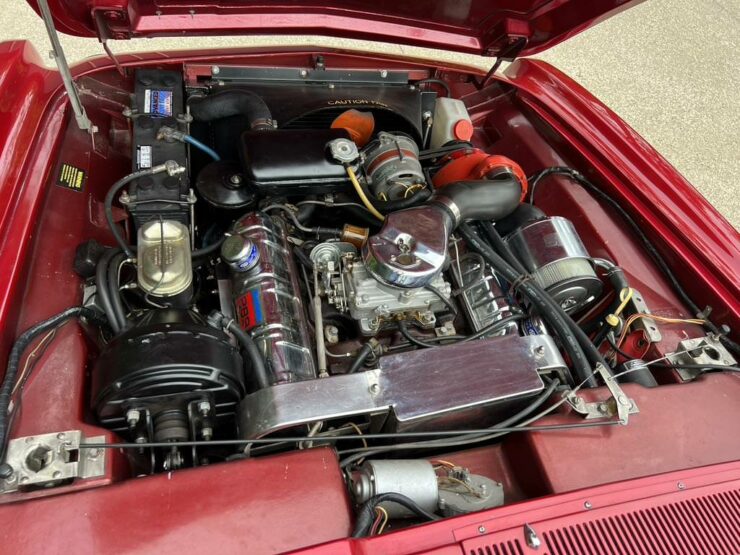
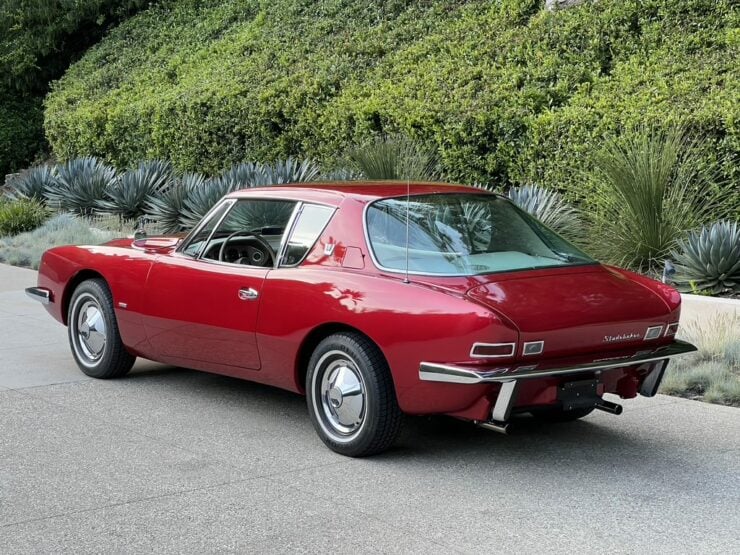
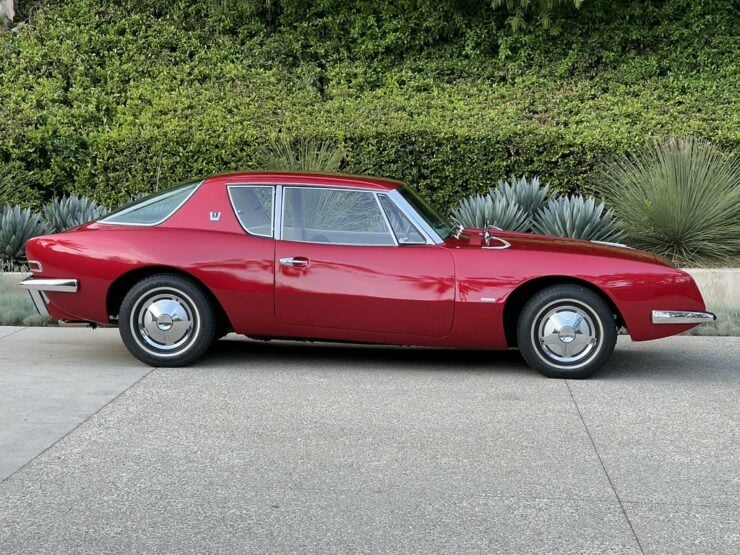
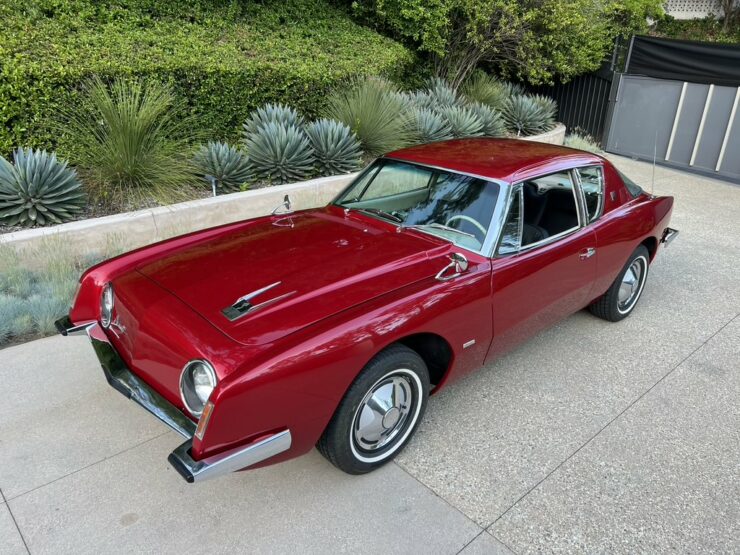
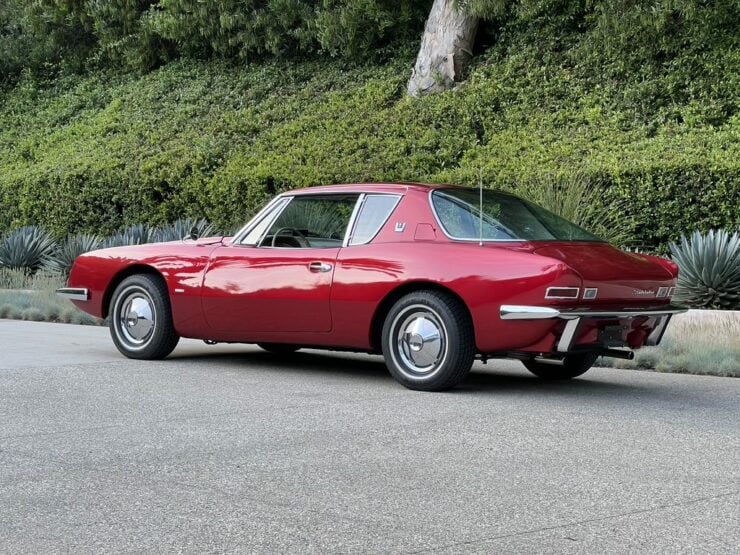
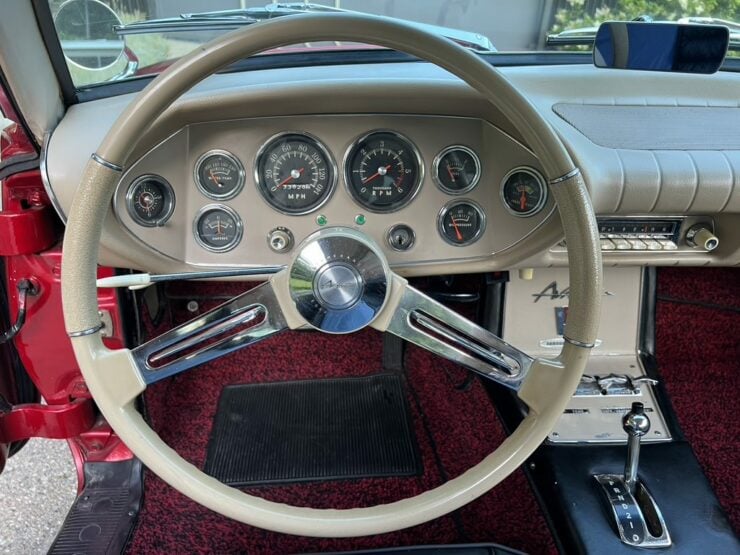
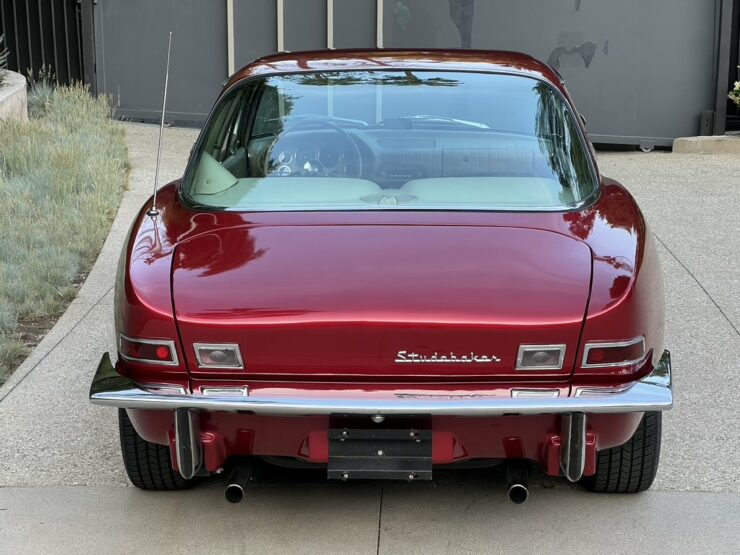
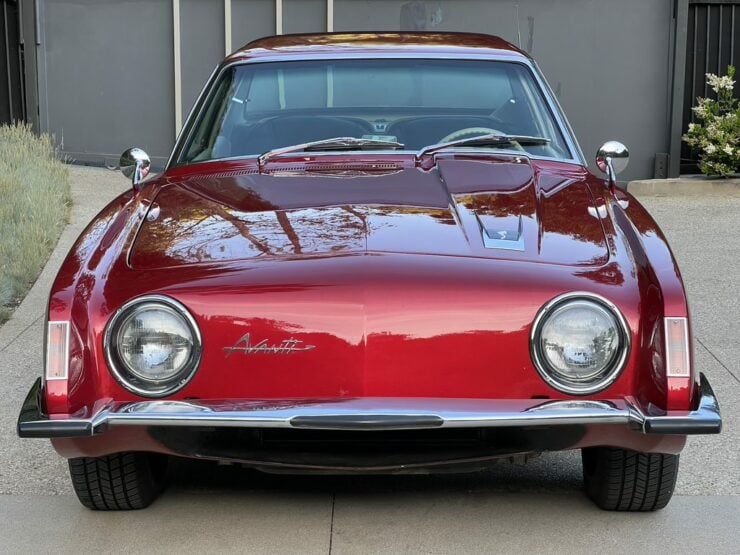
Images courtesy of Bring a Trailer.

